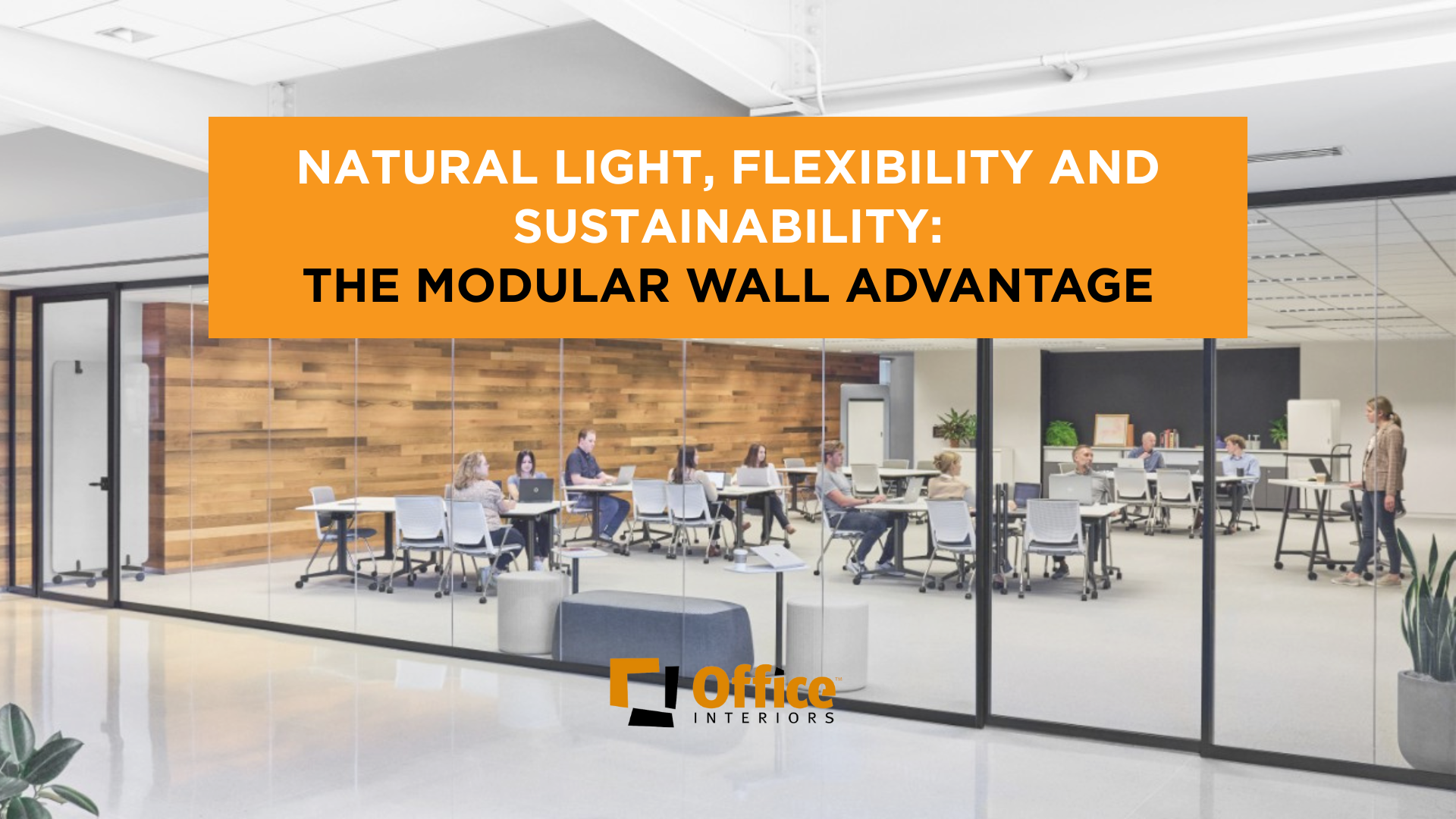How Modular Walls Support Sustainable Workspaces
May 22nd, 2025 | 3 min read
By Fola Adedeji

A bright office does more than just look good. It feels open and energizing. It draws people in. More importantly, it works. It helps teams feel better, think more clearly, and reduce unnecessary energy consumption.
As organizations rethink the workspace to support flexibility, wellness, and sustainability, modular walls have emerged as a smart architectural choice. These systems are not only shaping the appearance of offices but also their functionality. Their impact is most evident when examining how they influence lighting, temperature control, and long-term adaptability.
Using Modular Walls to Enhance Daylight in Workspaces
Lighting remains one of the largest sources of energy use in commercial buildings, but it is also one of the easiest to improve. Modular walls help extend natural light from exterior windows deeper into the interior. Instead of hitting a wall, daylight moves through offices, hallways, and meeting rooms, creating a consistent sense of brightness throughout the day.
That brightness does more than improve aesthetics. Natural light has been shown to enhance alertness, reduce eye strain, and support better sleep cycles. These benefits directly affect employee comfort and productivity. The more daylight you bring in, the less you rely on artificial lighting, which results in lower energy use and operational cost.
Choosing the Right Glass for Energy-Efficient Modular Walls
While glass allows light in, it must also manage heat, sound and privacy. This is where glazing becomes critical.
Single-pane glass does little to block thermal transfer. Heat moves through it easily, which can lead to uncomfortable temperature shifts and increased demand on HVAC systems. Double-pane glass adds an insulating layer between two sheets of glass, slowing the transfer of heat and keeping indoor temperatures stable. It also enhances sound insulation, a significant advantage in busy offices.
For spaces with high acoustic or thermal requirements, triple-pane glass provides even better performance. However, its added weight and cost make it less common in standard office environments. Most modern workplaces benefit from double-pane glass with a low-emissivity coating. This type of glazing allows light to enter while blocking unwanted heat, thereby improving year-round comfort and reducing energy consumption.
Making Every Watt Count
Modular walls do more than bring in daylight. When combined with smart building systems, they help create responsive environments that adjust to how people use the space.
Automated lighting controls, high-performance glazing, and efficient HVAC systems can significantly reduce electricity use and support year-round comfort. Buildings that utilize these systems often experience measurable reductions in utility bills. They also move closer to sustainability targets, and these outcomes support not only the planet but also the bottom line.
Designing for Change Without Waste
One of the key advantages of modular walls is flexibility. The flexibility makes it easier to adjust office layouts without demolition. As teams grow, shift, or reorganize, the same materials can be reused in new configurations.
This adaptability supports long-term planning and reduces material waste. Rather than tearing down walls and starting over, companies can reshape their space with what they already have. Over time, this lowers renovation costs and supports a more circular design approach.
Many of these systems also contain recycled materials and can be recycled at the end of their lifecycle. Manufacturers often provide environmental product declarations and other transparency documentation to help businesses make informed choices.
Balancing Privacy with Openness
Although transparency fosters a sense of openness, privacy and noise control remain essential. With the right setup, modular walls can deliver both.
Clear glass works well in open-plan areas and collaboration zones. For spaces that require privacy, options like frosted glass or textured finishes provide visual separation while still allowing light to pass through. More advanced features, such as switchable privacy glass, offer even greater flexibility.
Sound control is also critical. Modular walls with acoustic insulation can reduce noise transmission between rooms, allowing focused work to happen without sacrificing a bright, open aesthetic.
By selecting the right type of glass and using it strategically, offices can create environments that feel both open and contained. Teams can connect without distraction and focus without feeling boxed in.
More Than a Design Statement
The true strength of modular glass walls lies in their ability to bridge aesthetics with performance. Modular wall systems are no longer just a stylish feature; they are a strategic choice. As offices continue to evolve, these solutions offer the flexibility, efficiency and transparency that today's workplaces demand.
Want to bring more function and flexibility to your workspace? Contact our architectural interiors expert to explore options tailored to your space.
Fola is the Marketing Coordinator at Office Interiors. She creates content and drives digital marketing initiatives that help customers navigate workspace-related questions with confidence.
Subscribe to Our Blog
Contact Us
If you’re ready to start improving productivity, streamlining processes, and love the way you work through optimized workspaces and office technology, contact us today. Our team of experts is here to help!
Topics:

